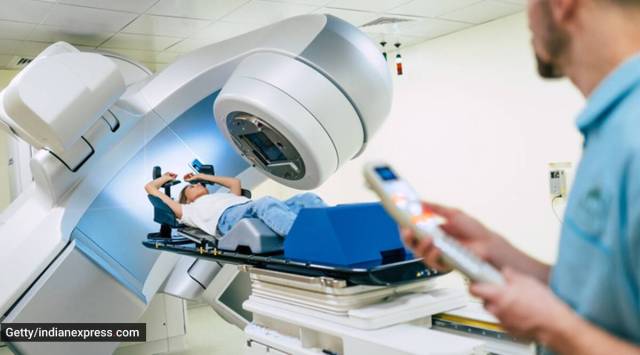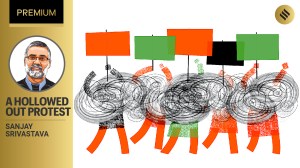- India
- International
‘Screening rates for common cancers are very low’: World NCD Federation advocates reducing cancer care gap in India
According to projections by experts, cancer deaths will rise to 13 million by 2030.
 Cancer is the second leading cause of death worldwide and about 10 million people die from cancer every year. According to projections by experts, cancer deaths will rise to 13 million by 2030.
Cancer is the second leading cause of death worldwide and about 10 million people die from cancer every year. According to projections by experts, cancer deaths will rise to 13 million by 2030. Cancer is the second leading cause of death worldwide and about 10 million people die from cancer every year. According to projections by experts, cancer deaths will rise to 13 million by 2030.
‘Close the Care Gap’, the theme of World Cancer Day for 2022-2024 recognises the power of knowledge and challenges assumptions. The Year 2022 marks the first year of a new three-year campaign centred on the issue of equity.
The first year of the campaign is about realising and recognising the inequities in cancer care around the globe. It also explains the barriers that exist for many people in accessing services and receiving the care they need. Inequity in cancer care costs lives.
In the Indian context, there are various structural, geographic, economic, cultural, and political factors that affect the extent to which India can provide affordable cancer care. This country spends less than Rs 600 per person on cancer care which is very low as compared to high-income countries spending more than Rs 75,000 per person.
Low insurance coverage and high out-of-pocket expenditure push patients and their families into catastrophic poverty following a diagnosis of cancer.

According to a report of Population-Based Cancer Registries in Chandigarh and Punjab, which are being run as a joint collaboration of PGI, Chandigarh and TMC, Mumbai with cooperation from the Department of Health and Family Welfare, Punjab and Health Department, UT Chandigarh, the Age-Adjusted Incidence Rates (AAR) in Chandigarh for males and female are 96.6 and 100.9 per 100,000 population respectively.
These rates are higher than the national average, which is 89.8 per 100,000 for males and 90 per 100,000 for females. The AARs for SAS Nagar are 87.3 and 96.2 for males and females respectively. Sangrur and Mansa cancer registry incidence rates are lower than the urban cancer registries; however, it is in comparison with other rural registries of the country. The main leading cancer incidence sites are lung and prostate in males whereas it is oesophagus and liver in Sangrur and Mansa PBCR. However, in women breast and cervix are the top leading cancer sites in all the four PBCRs.
In India, more than one-third of cancer cases are preventable, but there is little focus on prevention. The screening rates for common cancers are very low. In Punjab, only 4 per cent and 2 per cent of women aged 30–49 were ever screened for cervical and breast cancer respectively, whereas only 7.9 per cent population was ever screened for oral cancer. Similarly in Haryana, only 7.7 per cent and 8 per cent of women aged 30–49 were ever screened for cervical or breast cancer and 14.7 per cent of the eligible population was ever screened for oral cancer.
There is a need to strengthen the population-based cancer screening under the NPCDCS program. Prof JS Thakur, from PGI, Principal Investigator for PBCR Chandigarh and Punjab emphasised the need of reducing the treatment gap and improved access to diagnostic and treatment facilities, especially in the rural areas.
Cancer is needed to be seen and addressed as a public health priority, said Dr Harmanjeet Kaur, World NCD Federation. Improvements in outcomes will come through screening and early detection along with primary prevention of common risk factors like tobacco, alcohol, unhealthy diet, and physical inactivity, Dr Kaur added. Also, strengthening of diagnostic and treatment facilities in the region along with enhancement of capacity and increased clinical and allied healthcare manpower is essential, say the doctors.
Gap in cancer care arises from lack of awarenes
Every year, February 4 is observed as World Cancer Day to raise awareness among the public, inspire action and motivate reforms. With this year’s theme ‘Close the Care Gap’, the Department of Radiotherapy and Oncology at the Tertiary Cancer Care Centre of PGI has strived in every way to do this throughout the pandemic and never discontinued physical OPDs during the pandemic.
Prof Sushmita Ghoshal of the department said that the gap in cancer care arises from a lack of awareness, accessibility, affordability, and availability of resources. PGI, she added, is a centre for excellent cancer care in the public sector catering to patients coming from surrounding states and beyond.
The cost of treatment is nominal with multiple beneficiary schemes for those who need financial support. Insurance schemes from the government and private grants give patients access to world-class treatment facilities without associated financial toxicity. “By raising awareness and inspiring action, we hope to motivate further reforms in future and help achieve universal health care for our patients,” added Prof Ghoshal.
Must Read
May 11: Latest News
- 01
- 02
- 03
- 04
- 05





























